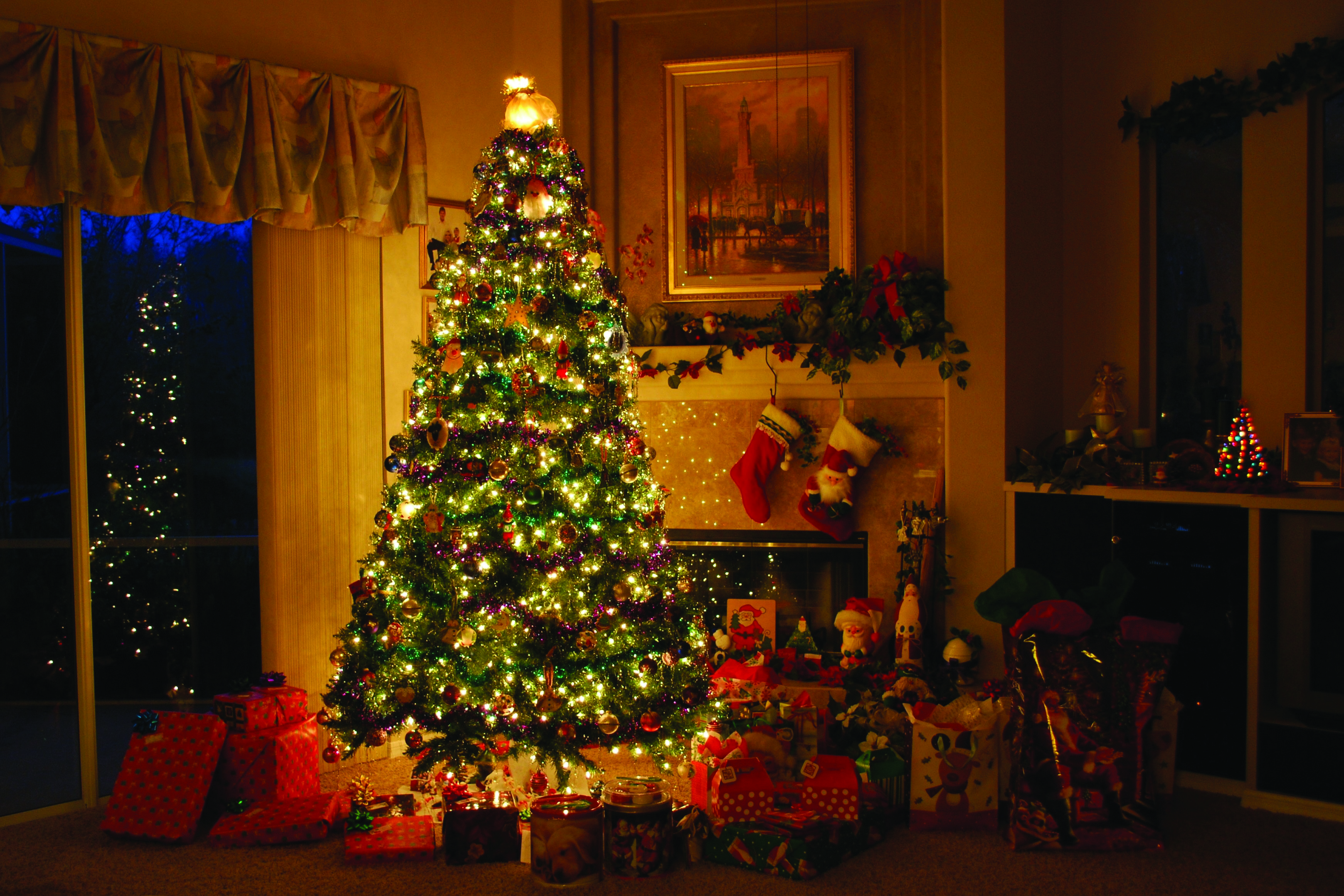The tradition of bringing evergreen plants into our homes goes all the way back to ancient times, to the Vikings and early Egyptians. The winter solstice in the northern hemisphere is December 21 or 22 and the longest night of the year. During those long dark winter nights, people brought evergreen boughs into homes and temples to ward off witches, ghosts, evil spirits and illnesses. It was all in worship of their sun gods. Believing the sun god had fallen ill or become weakened, the evergreens were reminders of summer’s coming promise, of the return of the sun and a return of the harvest and life.
The Druids, Celts and Vikings festooned their homes and temples with boughs from fir trees, symbols of everlasting life, the promise from Balder, their sun god. In Egypt, the sun god was Ra, with the head of a hawk and crowned with a golden sun disk. Egyptians brought green palm rushes into their homes and temples, symbolizing the triumph of life over death.
Early Romans celebrated the solstice with the feast of saturnalia in honor of Saturn, their god of agriculture and time. The celebration took place in mid-December, according to the Julian calendar, and culminated on December 25. The festivities included hanging wreaths, singing, and gift-giving, especially gifts of candles signifying the returning light. This would eventually evolve into our modern-day Christmas celebration.
Fast forward to 16th century Germany. Like their northern ancestors, Germans were still bringing trees into their homes and singing songs—including one about a pine tree, to a pine tree. O Tannenbaum, incidentally, means pine tree in German.
There’s a story that Martin Luther, the Protestant reformer, was walking home one night and saw the stars through the branches of the trees and wanted to add that effect to his own tree, so he wired live candles to its branches.
This is a colossally bad idea. Please don’t do this. (Thank goodness for electric Christmas tree lights.)
Early European settlers to America found Christmas trees strange. In fact, in 1659 a Massachusetts law made any observance of Christmas, other than going to church, a penal offense! People were fined for hanging decorations. This was reinforced by Puritan politicians of the day declaring the practice of caroling and decorating trees to be “heathen traditions” and “pagan mockery.”
This continued until the 19th century when two things happened. Between 1820 and 1860, 1.6 million Irish emigrated, leaving behind starvation, oppression and crushing poverty, and 1.5 million German immigrants also arrived fleeing loss of farmland, industrialization and over population. This influx of foreigners effectively blotted out the prevailing Puritanical ways. Then, in 1846, Queen Victoria and her German husband got a Christmas tree and suddenly the practice became all the rage in England and on the east coast of the United States.
Now, Christmas trees are not just an American tradition but a global one with North Carolina being the second largest provider of Christmas trees in the country, producing about 50 million trees a year from between 1,300 and 1,600 growers spread out on roughly 40,000 acres in our beautiful state.
Here in Apex, I found several independent Christmas tree stands along with just about every grocery store and hardware store selling trees as well.
So, regardless of whether you celebrate Christmas, or are among the new reemerging pagan/nature worship movement, the tannenbaum endures as a symbol of light returning to the world. There is a tree out there for you; bring one home today.
Learn more:
www.history.com/topics/christmas/history-of-christmas-trees
www.ancientandsacredtrees.org/post/oh-christmas-tree-history-of-the-traditional-christmas-carol
ncchristmastrees.com/tree-facts/
www.tomorrowsworld.org/magazines/2019/november-december/the-rise-of-modern-paganism








